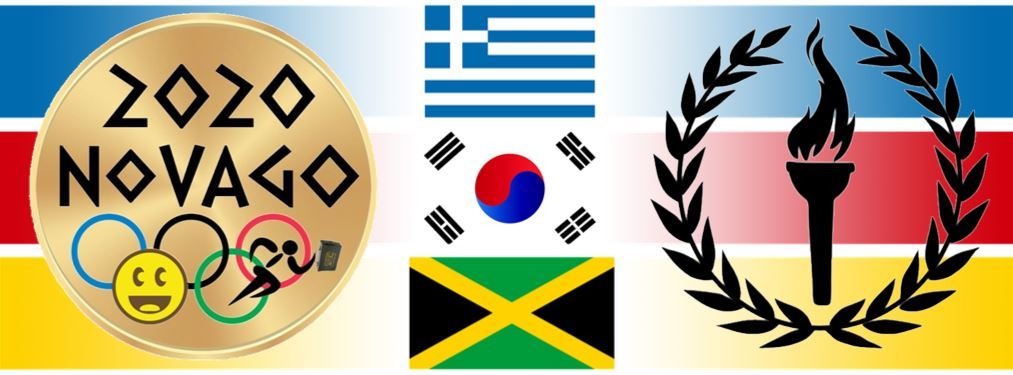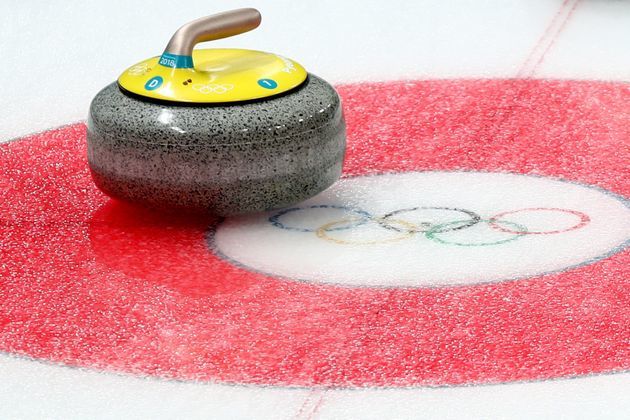
Have you ever wondered what would happen if geocachers were in the Olympics? What events would they compete in? Traditional P&G'ers? 100 m dash; everyone knows what has to be done, just do it as quickly as possible. Multi-cachers? Your biathletes, triathletes, pentathletes, heptathletes, and decathletes. Mystery cachers? Golfers; they spend more time thinking about geocaching than they do actually geocaching. Event cachers? It doesn't matter, they're just happy to march in the Opening Ceremonies, knowing they have no chance. Letterbox cachers? Race walkers; they walk a lot, but nobody seems to quite know why or where. Wherigo cachers? Equestian; something else does all the work and they're just following along. Webcam cachers? Rhythmic gymastics; sure it takes some skill, but the whole point is to be seen doing it. Virtual cachers? Archers and shooters; they can stand far away and still hit the target. APE cachers? Tug of War; they did it in the Olympics a long time ago and everyone has heard of it, but nobody actually does it.
BUT Earthcachers? Yes, Earthcachers are a special breed! They probably took an undergrad geology class long ago. They think that beer is one of the four food groups. They're probably out of shape and a bit too old for the Olympics. Just the word "petrology" in an Earthcache makes their heart beat a bit faster. They carry a rock hammer in their car, because you never know. For Earthcachers, there can only be one Olympic sport:
CURLING
Curling?, you ask. Isn't that the sport played on ice by out of shape, old, beer-drinking guys wearing funny pants? Why, yes it is!!! Let's look at three parts of curling that will convince you that it is the ONLY Olympic sport for Earthcachers.
The stone
The oldest known curling stone dates to 1511. In the early days of curling, flat field stones were often used. Today, the best curling stones use granite with a structure that limits the absorption of water, which causes the stone to pit and chip during repeated freezing and thawing. Since 1851, curling stones have been manufactured from two types of granite quarried from Ailsa Craig (shown as the background image), an island in the Firth of Clyde, the channel between Ireland and Scotland. Used in making stones for Olympic curling since 1924 and exclusively since 2006, the stones are composed of two types of granite. Blue Hone granite, which takes its color from the amphibole mineral riebeckite, is used for the portion of the stone that touches the ice - the "running surface". Common Green granite, richer in the mineral pyroxene giving a green color, is used for the surface that strikes other stones - the "striking surface".

Pebble
Most Olympic ice events (hockey, figure skating, speed skating) are designed to be played on flat, smooth ice. Watching the Zamboni prepare the rink is as much a part of hockey as watching the game. In contrast, the curling sheet - the name given to the playing surface - is first flattened, but unlike other ice sports, it is then intentionally sprayed with drops of water, forming pebble on the ice. In the image above, you can see the pebble - the bumps that resemble an orange peel. The pebble, combined with the concave bottom surface of the stone, allows the stone to travel further on the ice. By turning the stone clockwise or counterclockwise upon release, the stone travels along a curved path - the curl - as it moves across the pebble.
Hammer
Although the strategy of curling at the Olympic level can be quite complicated, the goal is rather simple - place as many of your team's stones closer to the center of the house - the series of concentric rings that constitute the target - than any of the stones from the opposing team. Olympic curling is played in 10 ends. In each end, teams take turns throwing 8 stones each, with the final stone called the hammer. In each end, only 1 team can score. In order to score, a stone must overlap the outermost ring of the house. Stones that either don't cross the opposing hog line 21 feet from the end or are knocked into the edge of the sheet are removed to the end and stacked in rows. The score is determined by the number of stones of one team closer to the center of the house (the button) than any of the stones of the other team. With 8 stones for each team per end, the maximum possible score per end is 8, although such a score is exceptionally rare. In winning the 2018 men's team curling gold medal, the US team scored a still exceptional 5 in the 8th end. The team that doesn't score in an end is awarded the throw of the last stone - the hammer - in the next end, giving them a substantial advantage in scoring.
To find the location of the cache, score the 10 ends in the puzzle below. Note that North uses the score of the red team, while West uses the score of the yellow team.

The Cache
The cache is placed with the generous permission of Fairfax County Park Authority. As with all such caches, absolutely no night caching is permitted! Please refrain from any before dawn or after sunset caching so as not to endanger our ability to place caches in the future.
To claim the cache: As with any cache, sign the log and you can claim the cache. The curling stone on the inside of the lid is NOT magnetic. DO NOT try to remove. Some curling-themed items were originally included in the swag bag. Please replace the cache in its original position so it is not accidentally discovered.
To compete for a curling medal and team standings in the NOVAGO Olympiad2020: You must post a photo in your log; your Olympiad2020 bib and bib number must be visible in the photo. Photos should be posted before Jan. 31, 2021, when judging will begin. Multiple opportunities exist within the cache for a curling-themed photo, one of which are instructions and materials for curling cosplay (costumed play). The materials are carefully prepared and packed in the bottom of the cache. The best photos will require teamwork, ideally with 3 people. PLEASE DO NOT UNDERTAKE COSPLAY IF YOU DON'T HAVE 25-30 MINUTES TO PROPERLY UNPACK, TAKE A PHOTO, AND REPACK THE COSPLAY KIT! The CO and subsequent finders thank you for your care with the cosplay kit.
Have fun, because curling rocks!
Congratulations to Co-FTF Que3nbe3 and BLURRYFAC3!
Best Mystery/Puzzle Cache Nominee
